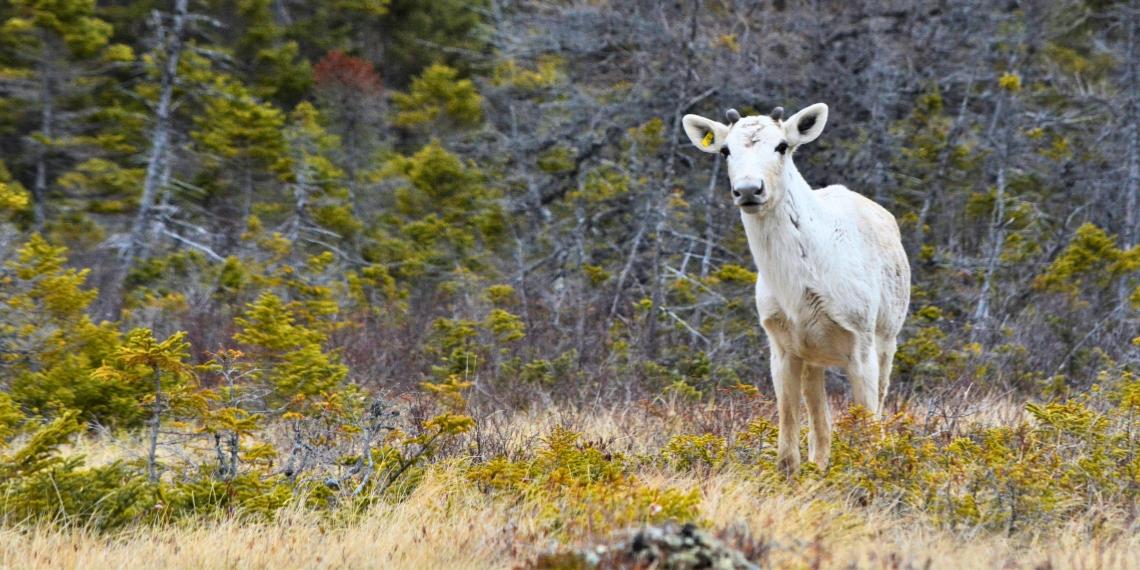Survival of the inconsistent: how behavioural plasticity in caribou increases population resilience

Across the animal kingdom, gregariousness can translate to better chances of survival and reproductive success when the benefits (such as protection, information, or food sharing) of being social outweigh the costs (e.g. disease transmission). In the rugged landscapes of Newfoundland, however, caribou are going against the grain with surprisingly inconsistent social behaviour.
In a recent article published in Nature Communications, a team led by Dr. Quinn Webber from the Department of Integrative Biology shows that individual caribou do not seem to have a stable social — or solitary — personality.
“In animals, there is empirical evidence to support the notion that more social animals have higher fitness,” says Webber. “But the animals in our study were not consistently social or asocial.”
To determine whether individual caribou spent more time alone or around others, animals were fitted with GPS collars that logged location data every two hours for up to four years, generating a large amount of spatial data over many seasons. This revealed a high degree of variation in whether animals were usually found close to others or alone.

In the Newfoundland caribous studied by Webber and colleagues, the lack of consistency in individual social behaviour could be a result of herd dynamics. Caribou are constantly wandering around the landscape — sometimes together, other times solitarily — such that the group as a whole is continually merging, splitting, and coming back together.
“Groups change in size and location rapidly throughout the day, sometimes hour to hour. When animals live in such a highly fluid fission-fusion society, the unit of organization seems to be the group rather than the individual,” explains Webber.
Social behaviour in animals is shaped by many factors, and disentangling these elements can be difficult. But Webber was able to leverage the same GPS data used to analyze the caribous’ social behaviour to investigate another trait he thought might be at play: habitat choice.
The geolocated data from the GPS allowed Webber to determine if individuals preferred certain habitat types.
“For every GPS location, we use satellite imagery to determine the habitat: for example, are they in a forest or an open wetland?” says Webber. “We could identify individuals as specialists or generalists depending on the range of habitats they chose to inhabit.”
The habitat specialization concept originates from classical ecological theory that was first developed based on animals’ diets. Specialists, like koalas, only eat a narrow range of food types, while generalists, like crows, eat a wide variety of the foods available in the environment. For Webber, translating this idea to caribous’ habitat was a breakthrough.
 “I pulled my ideas from ecological theory, grounding them in what others have done before in other animals,” says Webber. “But instead of using diet, I used habitat type to determine whether individual caribou were forest or lichen barrens specialists, or if they were more general in their preferences.”
“I pulled my ideas from ecological theory, grounding them in what others have done before in other animals,” says Webber. “But instead of using diet, I used habitat type to determine whether individual caribou were forest or lichen barrens specialists, or if they were more general in their preferences.”
The results revealed that while individual caribous’ proximity to others in the herd varied widely, some animals favoured certain types of habitats while others were generalists. However, individual preferences changed year to year as the population density fluctuated — indicating that being a specialist or a generalist, like being social or solitary, is not a trait that is set in stone.
Ultimately, having both individual flexibility, or “plasticity,” and group-wide diversity in terms of habitat preference is beneficial for caribou.
“Without plasticity, any type of disturbance — anthropomorphic or otherwise — can affect the whole population,” explains Webber. “However, if there’s plasticity in habitat specialization and a disturbance occurs, like part of the forest burning down, animals can adjust their behaviour.”
With follow-up work already underway to investigate differences in individual caribous’ diets, Webber’s research will continue to shed light on the biology of these iconic animals.
This study was funded by the National Sciences and Engineering Research Council of Canada.
Read the full study in the journal Nature Communications.
Read about other CBS Research Highlights.